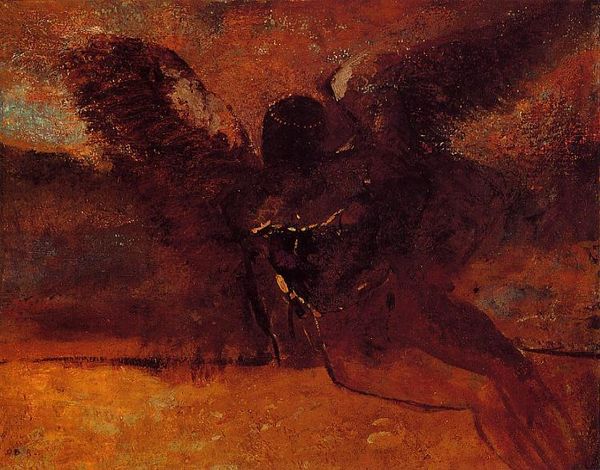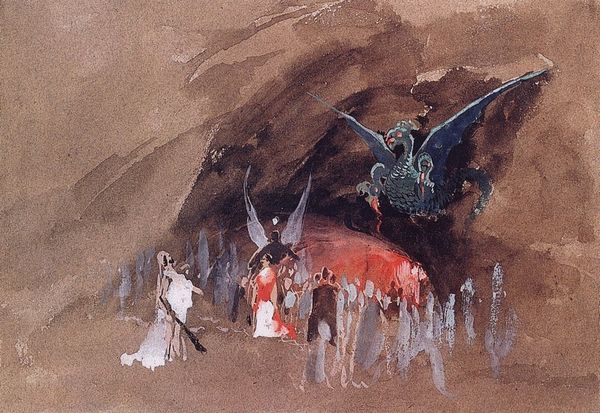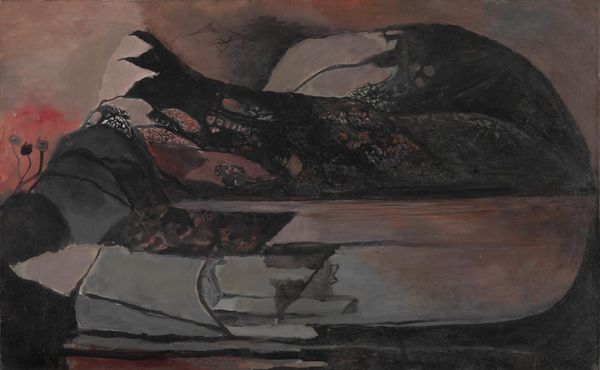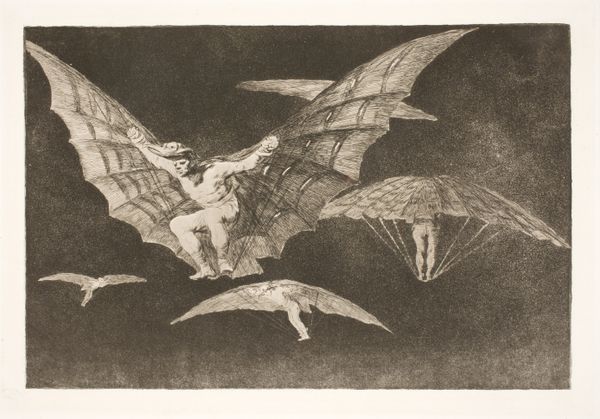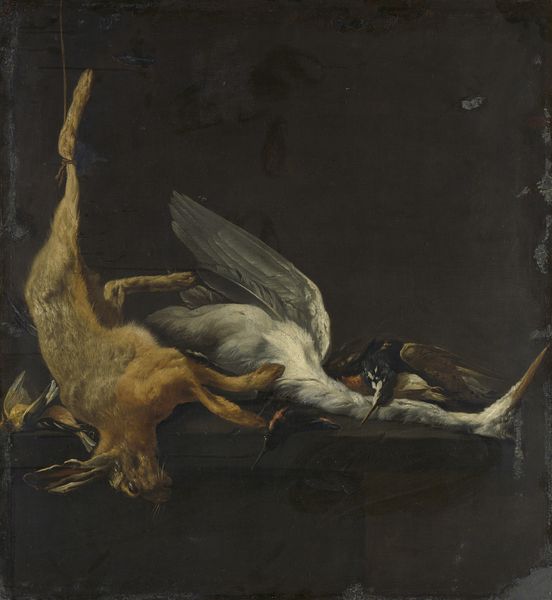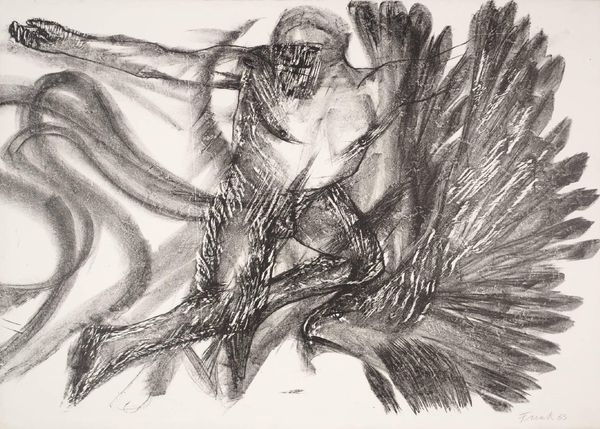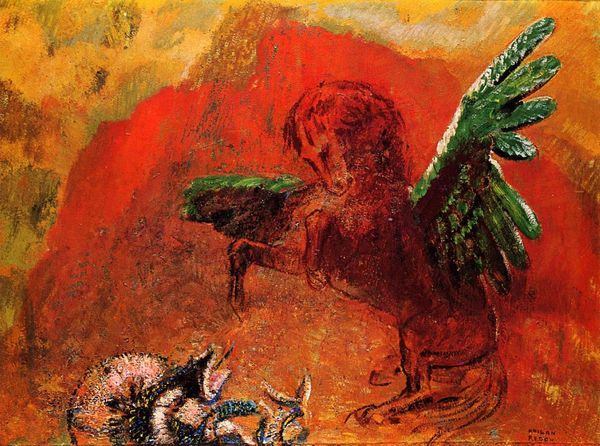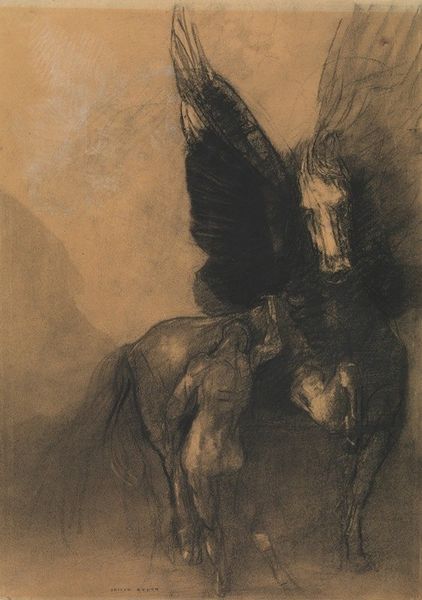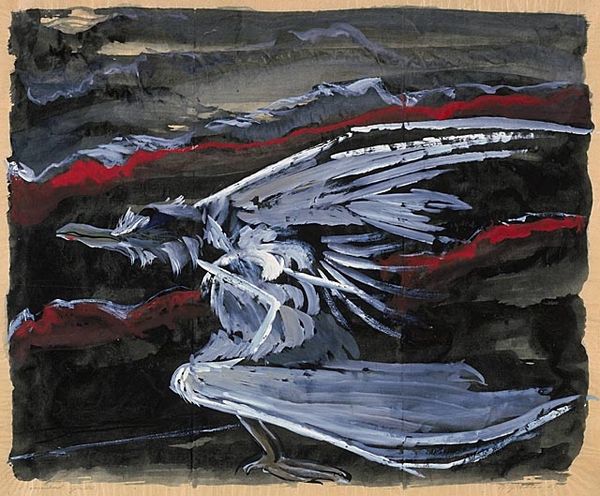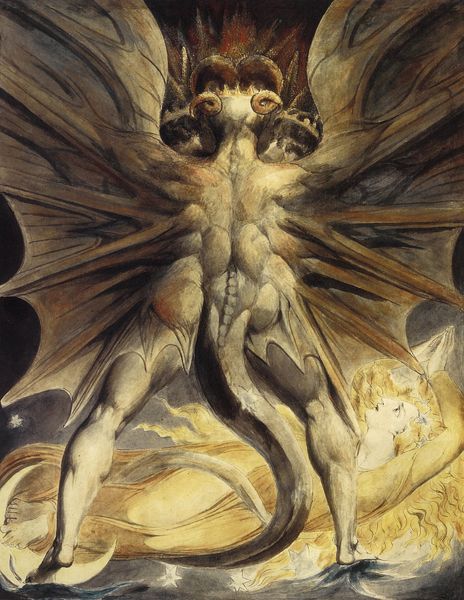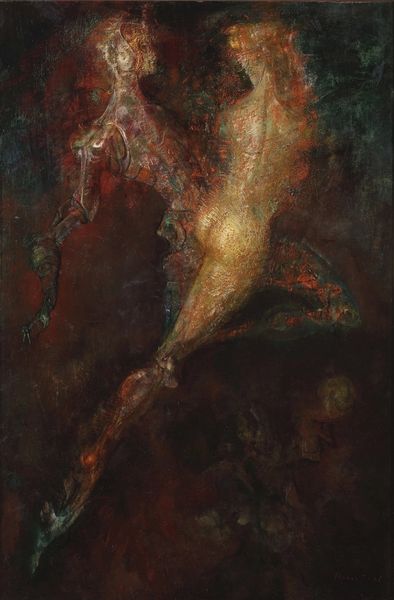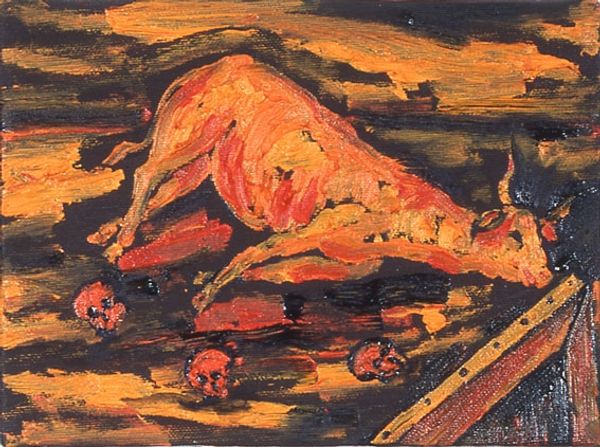
Copyright: Public domain
Curator: At first glance, this canvas vibrates with tension; that central bat seems to ripple from the surface. Editor: Indeed! Here we have "Flying Fox" painted by Vincent van Gogh in 1886. It's an oil painting currently housed in the Van Gogh Museum in Amsterdam. Curator: Oil paint has such materiality; here, Van Gogh manipulates it expressively, building thick layers to give volume and almost animates this creature. How much time did it take to put such a form on the canvas? One also might see how its darkness ties to popular culture’s use of the image, making one wonder how a museum context influences our reading? Editor: An excellent point. The museum plays a large part. At this time in history, zoological displays and collecting were fashionable within the social class who often visited museums, indicating one possibility how art institutions often dictate or steer interpretation. But regarding technique: observe the application of the paint and the tools needed. Is it the brush, palette knife, the colors themselves? What did the market avail to him at this time? How did the availability of certain supplies shape or determine this aesthetic decision? Curator: It seems that a romantic sensibility underscores all material conditions present and available. There is a tension between darkness and light that speaks to romantic and expressionistic undertones here. The handling of paint mirrors inner emotional turmoil – an animal caught in flight embodies something deeper. Editor: And if one shifts slightly toward the conditions surrounding reception and viewership, one might ask how such readings have themselves been manufactured through social and institutional channels. Early exhibitions would have shaped a now popularly accepted reading, of inner emotion and external turmoil that so heavily influences readings of his other artworks to date. Curator: A key aspect is how he employs inexpensive and available materials toward intensely subjective ends. How accessible these material choices were for those of his socioeconomic rank further underscore this expressionistic, democratic sensibility, or attempt to. Editor: In the end, this single image captures various competing pressures: one related to available raw materials, another from its place within both zoological history and art history – a collision that offers up rich potential for varied interpretations today.
Comments
No comments
Be the first to comment and join the conversation on the ultimate creative platform.
